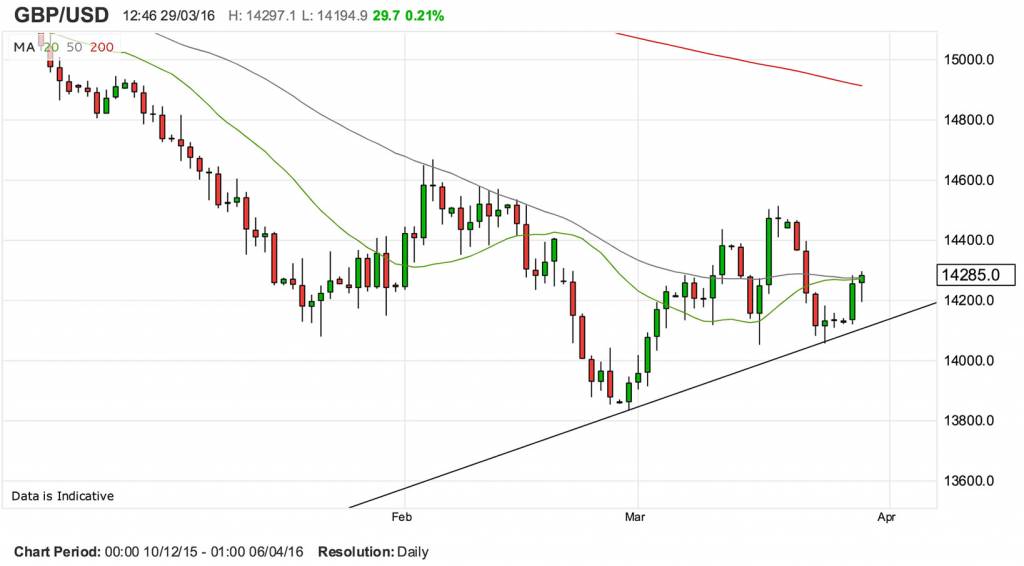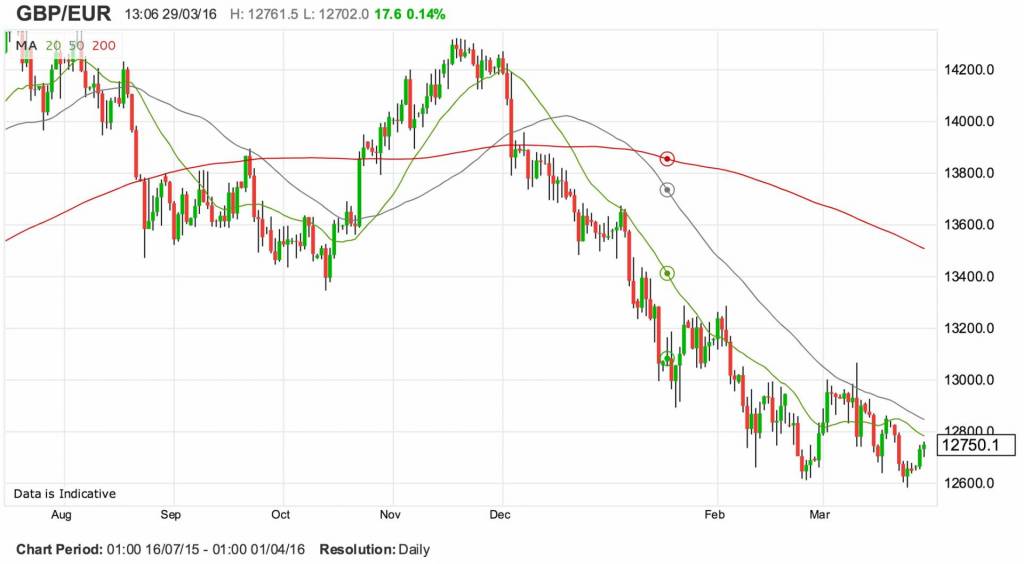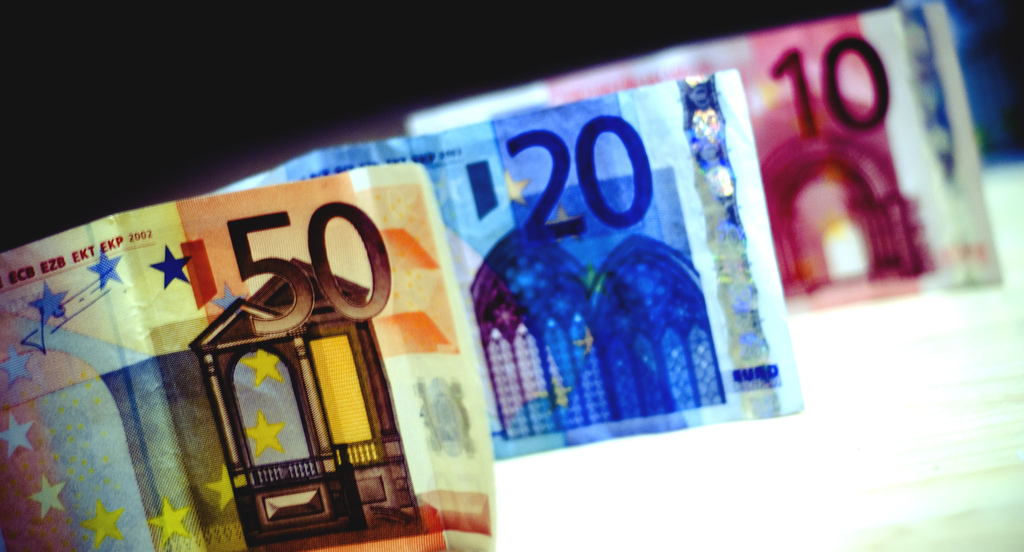The relentless decline in sterling, witnessed since December 2015, appears to be slowing.
Those watching currency markets in wait of a stronger British pound for their international payments have given the idiom ‘a fools errand’ an uncomfortable relevance over recent months.
The pound has come under seemingly relentless pressure as the EU referendum became a factor in determining exchange rate valuations.
It’s not that a ‘Brexit’ is necessarily bad for the pound or the economy, rather the unknowns that a ‘Brexit’ presents has weighed on financial decision-making.
The uncertainty has created a vacuum that all too readily sucks the life out of any attempts by sterling to rally.
In fact, the pound is now trading well below where it would be if economic fundamentals were in control with some analysts such as HSBC and UniCredit Bank pointing out the trade-weighted pound is some 7% lower than where it should be.
Of late we have seen the pound carve out a base against both the US dollar and euro. The question now becomes whether this base will hold and whether or not the bulls can take advantage of the end to the selling pressures and and push for more gains.
The Pound Against the Dollar: Stay Realistic on Recovery’s Prospects
Selling pressure in sterling ceased at 1.3835 back in February. Since then we have witnessed a steady rise:
As we can see the pattern of ‘higher lows’ suggests a turn-around in fortunes. More interesting though is that sterling may be about to cross both the 20 and 50 day moving averages.

In addition, this could also force the 20 day moving average to cross above the 50 day moving average, a notably positive signal for technical traders.
When such a crossover occurred back in April 2015 the ensuing rally was notable and took the GBP/USD from 1.5227 to 1.58.
Note though, that on the two subsequent occasions when such a crossover took place the pair only rallied briefly suggesting the signal to be false.
So while this signal can predict strong moves, it is not always right.
Meanwhile, Robin Wilkin, analyst at Lloyds Bank, reckons there is little chance of a substantive rally and we should expect the market to trade a range between 1.3850-1.35 support and 1.45-1.48 resistance.
“Long-term the trend remains down, with the greater risk still for a test below 1.35 key support, which has held since 1985. 1.28 is seen as key support below. A move back through 1.48/1.50 is needed to alleviate this underlying bear bias,” says Wilkin.
So while the near-term prospects look decent we would suggest those holding out for a better GBP/USD exchange rate don’t get too greedy and rather look to minimise risk.
Therefore setting a decent stop-loss order in case of a notable turn lower is paramount while buy orders at some of the resistance levels mentioned here could allow you to take some achievable and realistic levels.
The Pound Against the Euro: The Key Number is 1.26
The pound hit its worst level against the euro since 2014 last week when it touched 1.26.
1.2618 was touched in March from where the pound rallied confirming 1.26 to be a good support zone.

Others place the support zone just below here.
“Some of the previous downside impetus has dissipated as prices approach psychological support at 1.2500 and while this bearish momentum can still be regained – on an accelerated sell-off for example – the market otherwise appears content to pivot 1.2750 or so for now as previous declines are digested,” notes Lucy Lillicrap, a risk manager with Associated Foreign Exchange.
To reduce negative risk appreciably values Lillicrap reckons the exchange rate would need to hurdle at least secondary resistance in the 1.2850 area, thereby bringing 1.3000 back into focus within the context of a broader corrective pattern.
“Otherwise further losses look likely going forward,” says Lillicrap.
We agree and suggest those with large payments should ensure their broker has a stop-loss order set just below 1.26, or 1.25 if you are to base your call on AFEX’s research.
Whatever the case; a break lower could be ugly and you do not want to be caught up in it.
Again, be cautious in what you hope for and I would say 1.30 would be a great achievement for those hoping for better rates.
Written by Gary Howes at Pound Sterling Live























